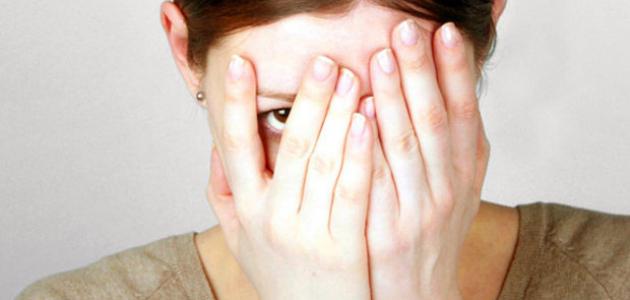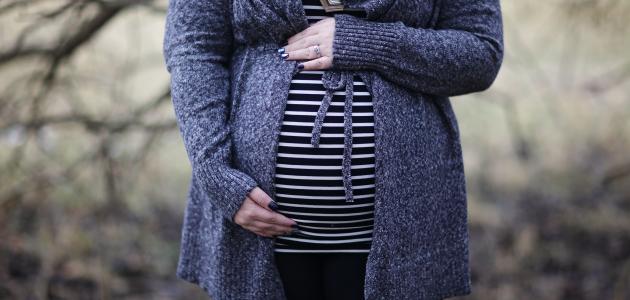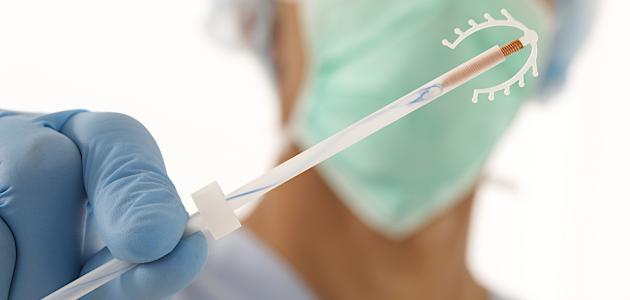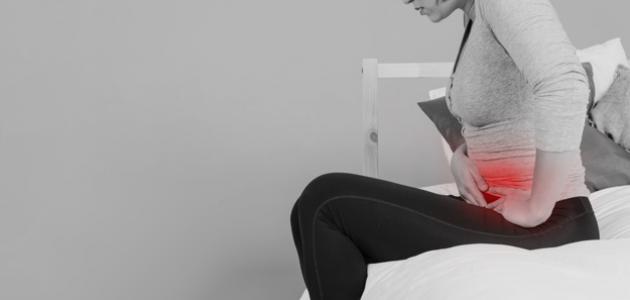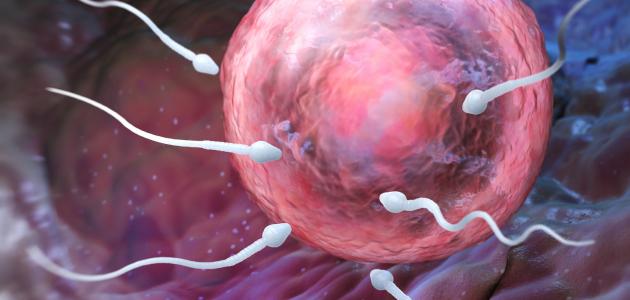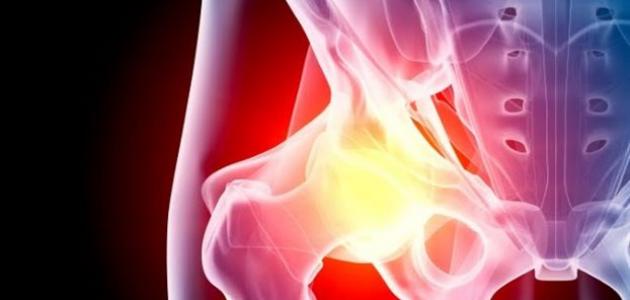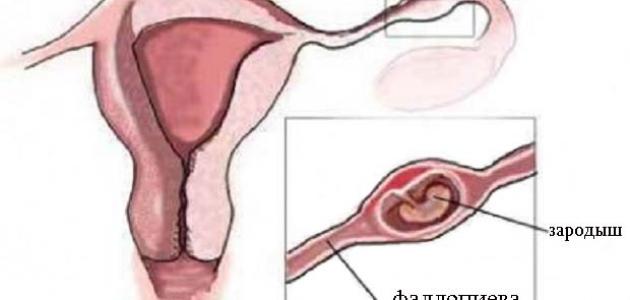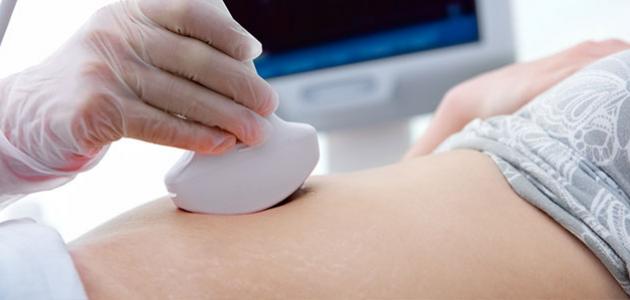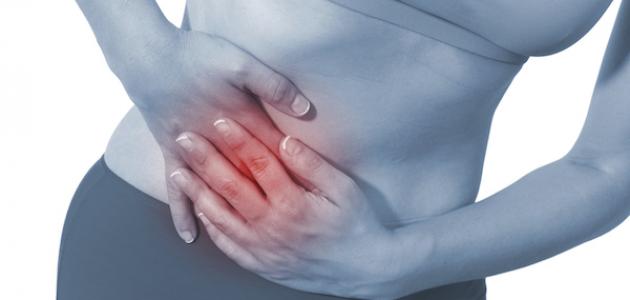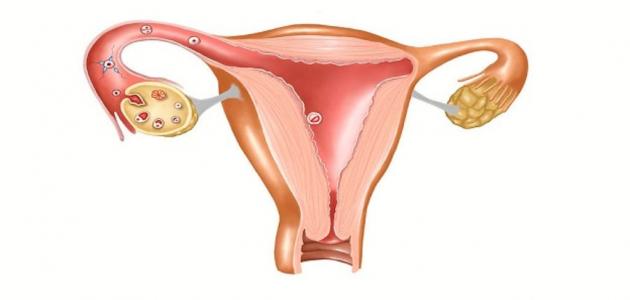Contents
Menstrual pain
Dysmenorrhea, menstrual pain, or menstrual cramps can be defined as painful cramps that occur at the start of the menstrual cycle or around it, and this pain usually begins just before the start of blood or menstruation, and this pain is due to the high levels of prostaglandin in the endometrium, as the proportion of these compounds is high on the first day of the menstrual cycle, but this pain decreases as soon as the levels of prostaglandins decrease, and this occurs with the continuation of menstruation, as the endometrium has been shed outside the body. [1] [2]
It is worth noting that some lifestyle changes may be used that may help alleviate pain, such as: exercising, performing relaxation techniques , or getting adequate sleep, and the health care provider may prescribe some medications to relieve of pain, such as medicine hormonal, such as contraceptives, or medications palliative for pain, and if medications fail to alleviate the pain then the focus is on treatment methods to find out the cause of pain and try to get rid of it. [2]
Reducing menstrual pain with natural remedies
Non-drug treatment methods can help reduce menstrual pain, as the aim of the treatments available at home is to relieve symptoms in women who suffer from menstrual cramps, and although the effectiveness of these treatments does not reach the level of effectiveness of drug treatments, only It is possible to combine the two methods to achieve the greatest benefit in reducing pain. [3] [4] Among the tips that help reduce menstrual pain, the following can be mentioned: [5]
- Use of heat: Heat helps relax the muscles of the uterus and surrounding muscles, which may relieve cramps and discomfort, as a bottle of hot water or a hot water bottle can be used and placed on the abdomen to relieve cramps, and a hot water bottle can be placed on the lower back to get rid of Back pain , in addition to the possibility of taking a warm bath, as this helps relax the muscles of the back, abdomen, and legs.
- Doing light exercise: Doing light exercise such as: light stretching exercises, yoga, or walking may help relieve pain, and it also causes the secretion of endorphins, which are natural painkillers, but exercise Strong and exhausting may not work for women who are in pain.
- Massage: This can relax the pelvic muscles and relieve spasms.
- Eat low-fat foods and eat more raw vegetables and grains. [1]
- Control of stress: This can be done by practicing relaxation exercises such as deep breathing, as stress causes symptoms to worsen. [1]
- Quit smoking: Smoking increases the risk of dysmenorrhea, so it is advised to refrain from smoking , and to avoid smoking people, and a health care provider can be consulted for help to quit smoking. [1]
- Limit your intake of foods and drinks containing caffeine. [6]
- Take a break when needed. [6]
- Refrain from drinking alcohol . [6]
- Avoid foods that contain salt. [7]
Medically relieve menstrual pain
There are many treatments available to relieve menstrual pain in women. [3]
Over-the-counter medications
Over-the-counter analgesics, such as: Acetaminophen, are used if natural remedies do not help relieve pain, as these drugs reduce menstrual cramps and pain, and it should be noted that nonsteroidal anti-inflammatory drugs can be used anti-inflammatory drug), such as ibuprofen and Naproxen , as these drugs help reduce menstrual cramps as well as relieve pain, by reducing the amount of prostaglandin produced by the uterus, thus reducing its effect, and it is necessary to consult a doctor before starting By taking these medicines to ensure that this is possible, in addition to informing him in the event that the recommended dose is not sufficient in relieving menstrual cramps, and it is also necessary to follow the instructions attached to the medicine package regarding the dose that should be used, and it is worth noting that the use of NSAIDs is prohibited. If you suffer from bleeding, allergies to aspirin, ulcers and other stomach problems, or liver disease . [5] [8]
In this context, it should be noted that non-steroidal anti-inflammatory drugs are available without a prescription, and some require a prescription for use. However, prescription drugs are not considered more effective than over-the-counter ones as long as the appropriate or necessary dose of Both. [3]
In fact, it is recommended to use painkillers at the start of menstruation, or when symptoms are felt, and to continue taking them for two or three days, or until the symptoms disappear and disappear, and it should be noted that the American Journal of Obstetrics & Gynecology has been published. Gynecology) in a 2017 study reported that 18% of women with menstrual pain did not respond to NSAIDs despite their effectiveness in relieving pain. [9] [10]
Medicines prescribed by a doctor
Anti-inflammatories
The doctor may prescribe some strong anti-inflammatories to relieve pain in the event that over-the-counter NSAIDs do not achieve the desired purpose, as narcotic pain relievers can be used, such as: medicine containing acetaminophen and hydrocodone in its formula Women with intolerable menstrual cramps. [11]
If lifestyle changes and the use of over-the-counter medications do not help relieve pain, the health care provider may prescribe other drugs at a higher dose than available over the counter, such as: ibuprofen or other anti-inflammatory drugs, and oral contraceptives may be prescribed . Women who take these medications have less period pain. [6]
Pills
It is used in the event of failure of anti-inflammatories or when there are contraindications to their use, or if there is a desire to prevent pregnancy, as the use of hormonal contraceptives is an effective and valid method in treating primary dysmenorrhea, and it should be noted that most hormonal contraceptives that have been studied for this purpose are The effectiveness of other types has been proven through experience and use for the same purpose, such as: rings and patches, injection of medroxyprogesterone , and the hormonal IUD that secretes the substance Levonorgestrel . [12]
Caution and caution should be taken when starting to use hormonal contraceptives, as they may cause bleeding and spots in the first two or three cycles of using them, and it is also necessary to stop using these medicines and see a doctor when any symptoms or signs of infection appear. Vascular disease , which is a disease that affects mainly blood vessels, and it is also necessary to alert the patient that the period pain will not disappear completely within a few months, despite the possibility of feeling some relief during the first or second cycle. It is also useful to inform the woman of the possible side effects that may result from the use of hormonal contraceptives, which are chest pain, abdominal pain , changes in vision or eyes, headache, and severe leg pain. [12]
Reducing menstrual pain by treating the cause
Menstrual pain can be relieved by treating the cause of the pain, such as treatment of uterine fibroids or endometriosis, as Uterine fibroids or Endometriosis are among the conditions that cause suffering from menstrual cramps And pain, so treating these conditions can reduce pain, and this can be done through some surgical procedures to remove unwanted tissues, such as: laparoscopy , or uterine artery embolization , as well as A hysterectomy is used for women who no longer want to have children, and this is considered a last resort treatment option. [13] [11]
In fact, there are other causes of secondary dysmenorrhea, as these causes are related to a woman's suffering from diseases in the reproductive organs, and among these reasons the following can be mentioned: [14]
- Pelvic inflammatory disease: known as pelvic inflammatory disease as a bacterial infection caused by many different types of bacteria, as these infections occur in the reproductive organs of women, which include the uterus, ovaries, and fallopian tubes, and cervix, as these lead Infection refers to suffering from pain in the lower abdomen, and this pain is the most common symptom, [15] and it also leads to heavy and painful menstrual periods, [16] It should be noted that pelvic inflammatory disease can be treated through the use of antibiotics prescribed by the doctor. [15]
- Narrowing of the cervix: it can be defined as narrowing of the cervix as a narrowing of the special channel of the cervix, which forms the lower part of the uterus, but this stenosis does not cause the occurrence of any symptoms usually, but it can cause disturbances before menstruation Reaching menopause, such as: dysmenorrhea, abnormal bleeding, menopause , and it is worth noting that cervical stenosis is treated if a woman suffers from its symptoms, or hematometra occurs, which is an accumulation Blood in the uterus, or pyometra only, and treatment is done by expanding the cervix. [17]
- Adenomyosis: The term adenomyosis refers to a condition in which endometrial cells grow inward toward the muscular wall of the uterus instead of outward, as these cells are stimulated during a woman's menstrual cycle, leading to very severe bleeding And abnormal menstrual cramps, and it can be said that there are many treatment options available to treat this condition, and among these options are the following: [18]
- Anti-inflammatory medications such as ibuprofen to reduce pain and discomfort.
- Hormonal drugs, such as: the oral contraceptive pill, the hormonal IUD, or hormonal injections, as they help reduce symptoms.
- Uterine artery occlusion.
- Hysterectomy.
References
- ^ A b t w "Dysmenorrhea" , Www.drugs.com , Retrieved 3-3-2020. Edited.
- ^ A b "Dysmenorrhea: Painful Periods" , Www.acog.org , Retrieved 22-3-2020. Edited.
- ^ A b T. "Patient Education: Painful Menstrual Periods (Dysmenorrhea) (Beyond The Basics)" , Www.uptodate.com , Retrieved 3-3-2020. Edited.
- ↑ "Dysmenorrhea" , familydoctor.org , Retrieved 3-3-2020. Edited.
- ^ A b "Menu Home Remedies For Menstrual Cramp Relief" , www.medicalnewstoday.com The , Retrieved 3-3-2020. Edited.
- ^ A b t w "Dysmenorrhea: On Management And Treatment" , My.clevelandclinic.org , Retrieved 4-3-2020. Edited.
- ↑ "What Are Menstrual Cramps?" , www.webmd.com , Retrieved 6-3-2020. Edited.
- ↑ "Period Pain" , medlineplus.gov , Retrieved 4-3-2020. Edited.
- ↑ "Menstrual cramps" , www.mayoclinic.org , Retrieved 4-3-2020. Edited.
- ↑ "NSAID resistance in dysmenorrhea: epidemiology, causes, and treatment" , www.ncbi.nlm.nih.gov , Retrieved 4-3-2020. Edited.
- ^ A b "What Are Menstrual Cramps?" , www.everydayhealth.com , Retrieved 4-3-2020. Edited.
- ^ A b "The On Management Of the Primary Dysmenorrhea" , Www.uspharmacist.com , Retrieved 4-3-2020. Edited.
- ↑ "Menstrual cramps" , www.mayoclinic.org , Retrieved 11-3-2020. Edited.
- ↑ "Dysmenorrhea" , my.clevelandclinic.org , Retrieved 12-3-2020. Edited.
- ^ A b "Pelvic Inflammatory DISEASE" , Www.womenshealth.gov , Retrieved 12-3-2020. Edited.
- ↑ "Overview -Pelvic inflammatory disease" , www.nhs.uk , Retrieved 12-3-2020. Edited.
- ↑ "Cervical Stenosis" , www.msdmanuals.com , Retrieved 12-3-2020. Edited.
- ↑ "What to know about adenomyosis" , www.medicalnewstoday.com , Retrieved 12-3-2020. Edited.

